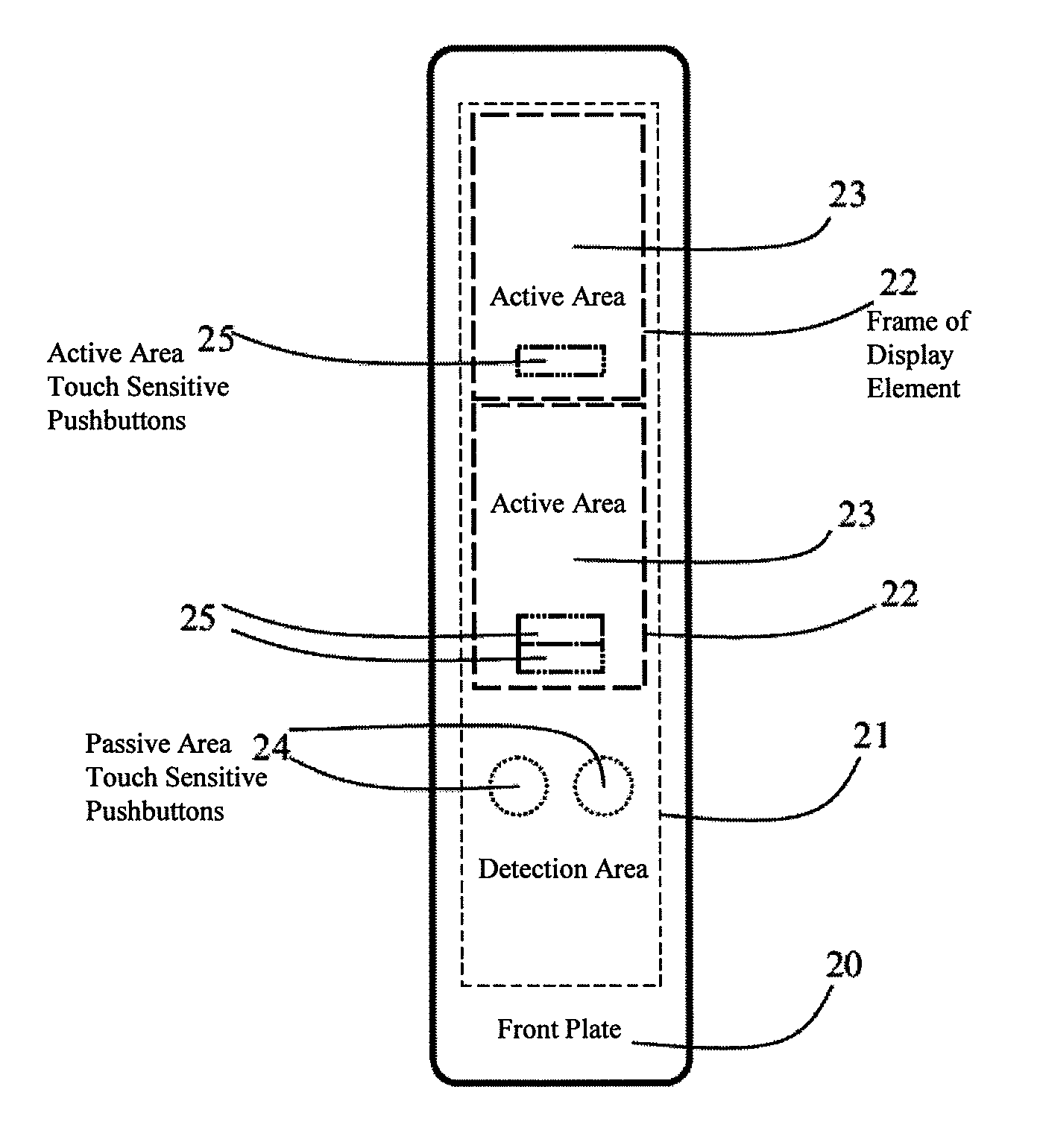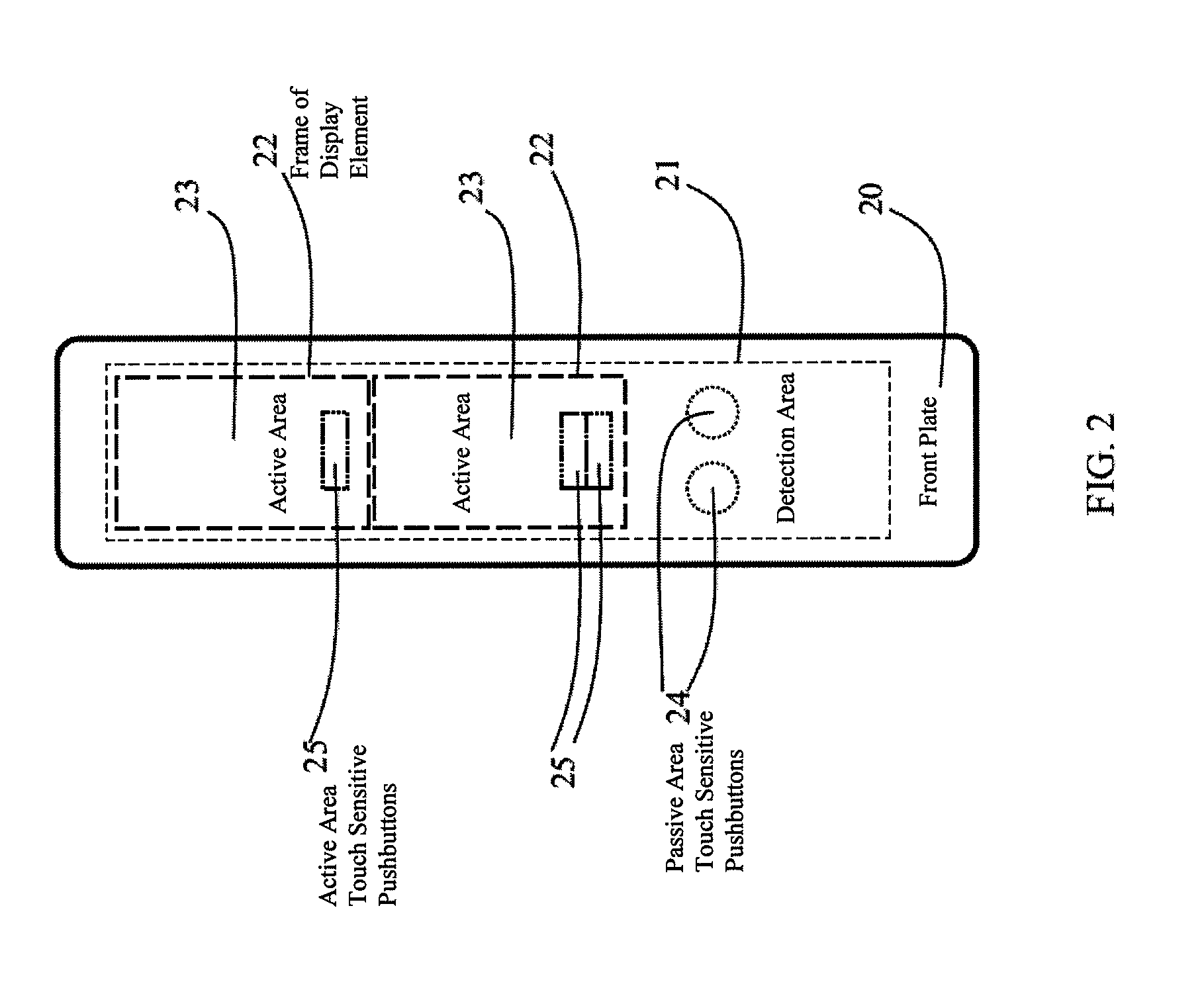Touch based elevator call panel
a technology of elevator call panel and touch, which is applied in the field of elevator system, can solve the problems of awkward implementation of call panel of desired shape and size, inconvenient cleaning, and inability to meet the needs of elevators, and achieve the effects of preventing or at least reducing malfunctions resulting from vandalism, saving costs, and being easy to clean
- Summary
- Abstract
- Description
- Claims
- Application Information
AI Technical Summary
Benefits of technology
Problems solved by technology
Method used
Image
Examples
Embodiment Construction
[0026]FIG. 1 presents the basic components of a call panel according to the invention, which are: display elements 10, a touch sensor 11, a front plate 12, and also a control unit 13. FIG. 1 contains two display elements 10, but the number of them can also be different, depending on the installation site. The display elements are installed in a vertical attitude such that their shorter sides are horizontal, in which case the aspect ratio will be e.g. 3:4 or 9:16. The display elements are installed with their shorter sides facing each other to achieve an elongated lay-out. The display elements are e.g. flat TFT displays (TFT-LCD). The front surface of the front plate 12 forms the front surface of the call panel, in connection with which front surface a touch sensor 11 is integrated so that the detection area covers essentially the whole front surface of the front plate. The front panel is partly translucent so that the graphic information produced with the display elements is visible...
PUM
 Login to View More
Login to View More Abstract
Description
Claims
Application Information
 Login to View More
Login to View More - R&D
- Intellectual Property
- Life Sciences
- Materials
- Tech Scout
- Unparalleled Data Quality
- Higher Quality Content
- 60% Fewer Hallucinations
Browse by: Latest US Patents, China's latest patents, Technical Efficacy Thesaurus, Application Domain, Technology Topic, Popular Technical Reports.
© 2025 PatSnap. All rights reserved.Legal|Privacy policy|Modern Slavery Act Transparency Statement|Sitemap|About US| Contact US: help@patsnap.com



